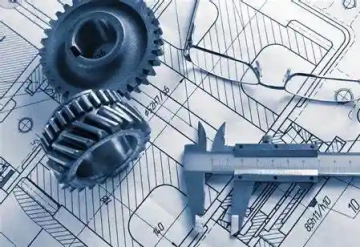THANK YOU FOR SUBSCRIBING

 Michael Day, Head of BIM & 3D Design, PERI
Michael Day, Head of BIM & 3D Design, PERIBIM (Building Information Modeling) has revolutionized the construction industry, transforming it from a traditionally paper-based process to a more digital and collaborative one. The implementation of BIM technology in construction projects has resulted in increased productivity, reduced project costs, and improved efficiency.
Even with a more frequent adaptation, BIM is still being seen as a design technology for construction in many cases, the pending potential is actually so much more and it can only be realized by construction teams who truly enable BIM’s full access and use while on the field.
As a leading global provider of formwork and scaffolding systems, PERI has integrated BIM into our operations, as well as the innovative use of extended reality (XR) technology through our self-developed PERI Reality Anchor. We believe it is a tool for all stakeholders and all stages and we should always aim to enable better access to BIM technology from management to site workers throughout the construction process.
BIM@PERI
One of the key advantages of using BIM is that it allows for more efficient project planning. PERI has been at the forefront of digitalization in the construction industry for years. Not only have we set ourselves the goal of acclimatizing to Industry 4.0, but we are also aiming to support the pillar of our success - our clients in the most effective way possible. By having all personnel, processes, and tools interact with each other throughout the entire project cycle, it is possible, for example, to minimize the requirement for reworking operations in the execution phase by way of optimized planning, which will also lead to a reduction in costs.
Our wide range of software solutions enables our clients and us to optimize complex tasks and processes across different projects. The reliable resource planning function and extensive report functions can provide users with a detailed overview of costs and help to minimize errors and rework, reducing costs and improving the overall quality of the finished product.
Utilizing BIM for Projects
BIM allows for better coordination between project stakeholders, enabling greater accuracy in project planning and estimation. It is often that we have limited its usage to the in-house team as a design and planning tool. Exploiting BIM can actually provide great help on-site, especially to safety and efficiency.
“By creating detailed 3D models of the building, it is possible to identify potential safety hazards before construction even begins.”
Site managers and contractors can anticipate challenges and ensure the entire build process runs smoothly from start to finish as the stakeholders can see what needs to be done at any given point in time as well as changes that need to be made before construction begins again. Teams that can work towards fully utilizing BIM by integrating it with the respective mobile app and software, will only build better projects and contribute better to the construction industry.
XR and on-site BIM applications
Visualization is becoming increasingly important in all phases of construction. In addition to our use of BIM, PERI has also been experimenting with extended reality (XR) technology to contribute our part in the evolution of the construction industry.
The “Reality Anchor” is one of the key functions of the PERI Extended Reality App, it incorporates our products and solutions to construction projects and visualizes them in 3D format in real life. It helps to increase the overall safety of temporary works and assembly speed on worksites as labors can reference from the 1:1 3D model and site engineers can inspect the assembled work accordingly in the real-world environment
Safety has been one of the, if not, the most important aspect in our industry, the App not only ensured the workers fully understand the assemble instructions, but also allowed engineers and other stakeholders to access comprehensive project information easily in real-time, making it effortless to identify potential issues and optimize the construction process.
In the modern world, almost everyone has access to smart devices at all times, digitalization is crucial and inevitable. The ever-changing technologies have provided us an enhanced communication and efficiency while preventing errors from top to bottom. The use of XR technology can even improve user experience by creating an immersive workflow, allowing them to see and experience designs before construction even began.
BIM has transformed the construction industry in many ways, enabling greater collaboration, cost reduction, and improved efficiencies. In addition to the benefits mentioned in the previous section, there are several other innovative ways that BIM can be utilized.
One of the most promising applications of BIM is in the area of sustainability. With BIM, it is possible to create detailed models of building components that can be manufactured off-site and then assembled on-site. This can lead to significant time and cost savings, as well as improved quality control.
By creating detailed 3D models of the building, it is possible to identify potential safety hazards before construction even begins. This can help to lower the risk of accidents and injuries on the job site. Additionally, it can be used to create virtual safety training programs, enabling workers to practice safety procedures in a safe and controlled environment.
With its innovative applications in different aspects and more up-and-coming new technologies being adopted at work, BIM has the potential to revolutionize the construction industry even further in the years to come and we should make sure our business is aware of the constantly unfolding changes.
Read Also
Development of the Logistics Warehousing Market in Brazil
Driving Innovation and Preserving Tradition
Operational Leadership VS Field Leadership in the Utility Construction Business
People-First Innovation: Developing Virtual Design and Construction (VDC) Training Programs to Empower Field Team Members
Sustainable Projects: Aligning Business and Purpose in Latin America
Engage Smarter: Why Constraints Matter More Than Hazards

 Copyright © 2025 All Rights Reserved | by:
Copyright © 2025 All Rights Reserved | by: Construction Tech Review
| Subscribe | About us | Sitemap| Editorial Policy| Feedback Policy














